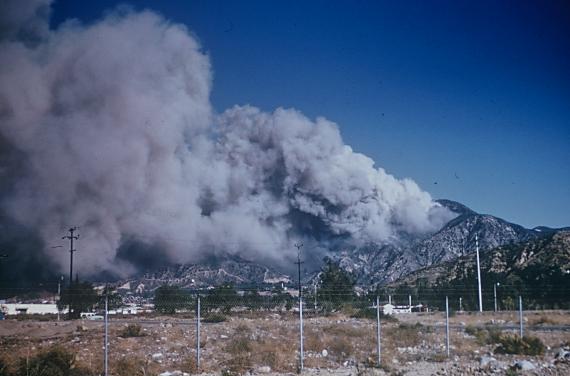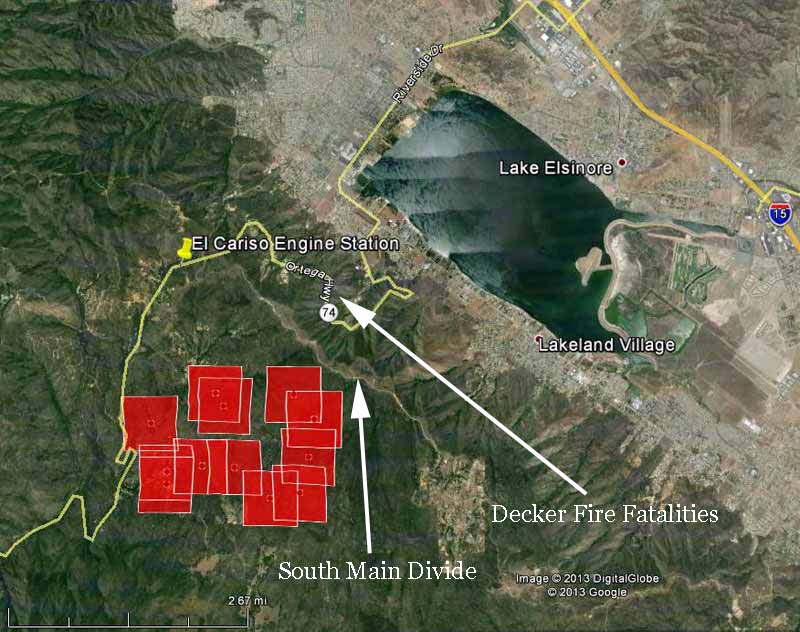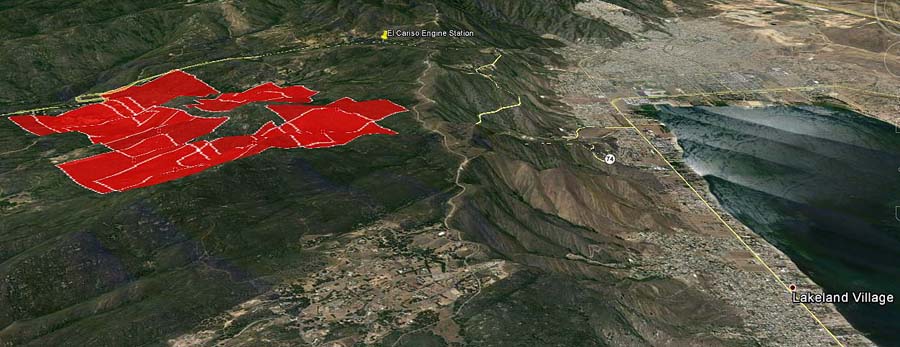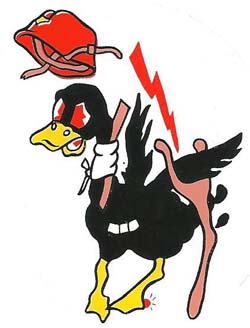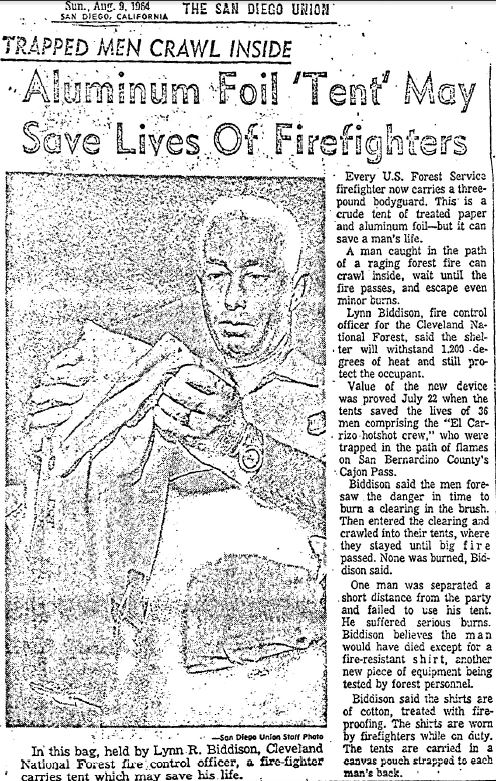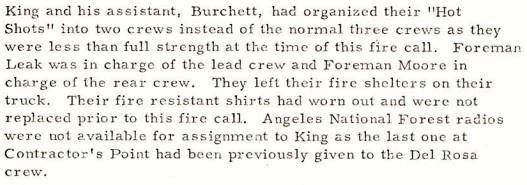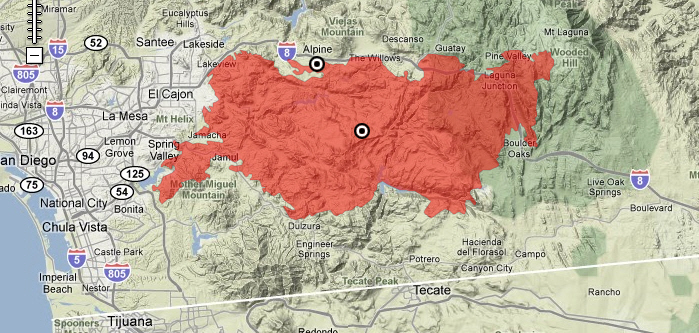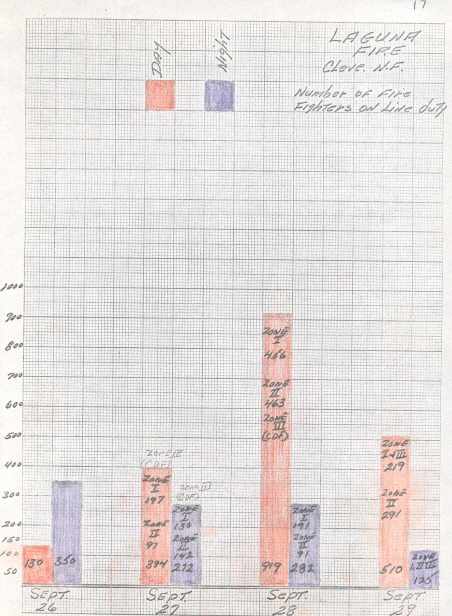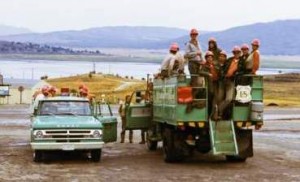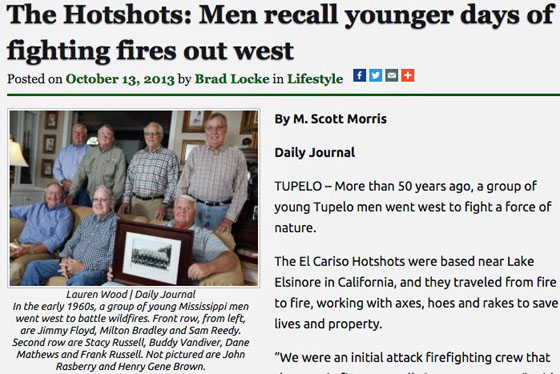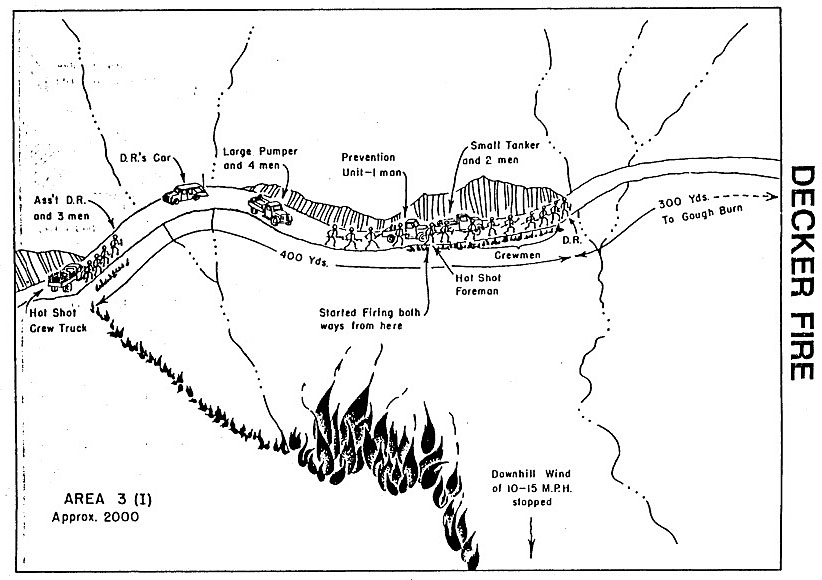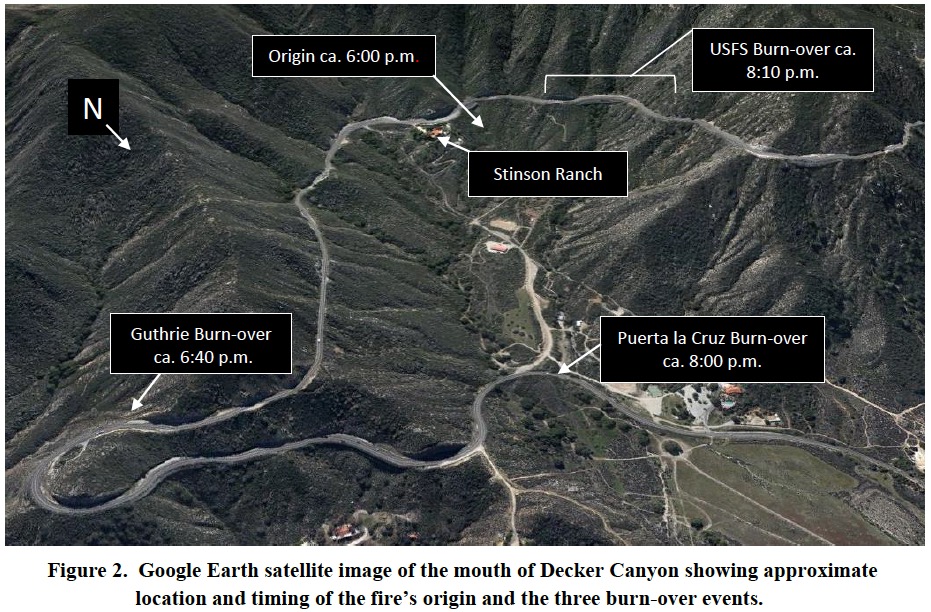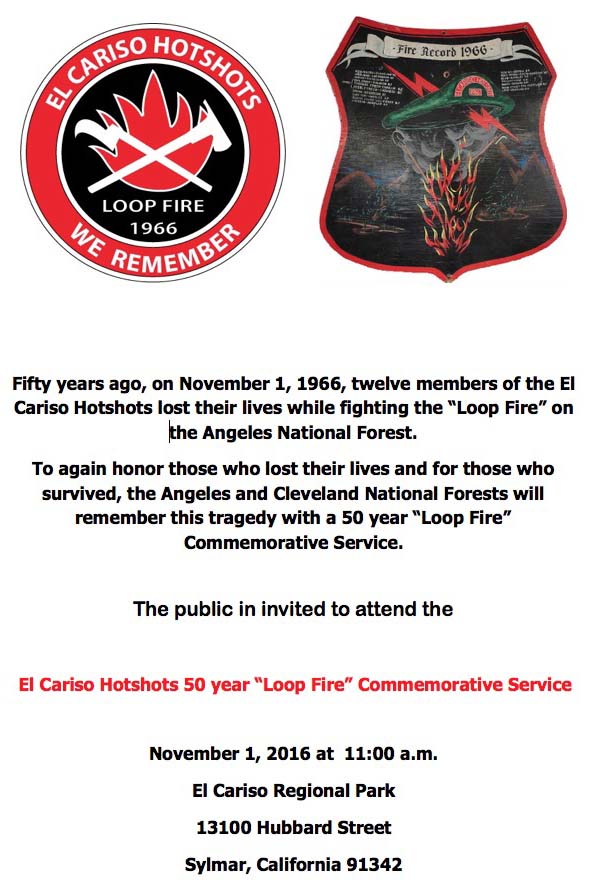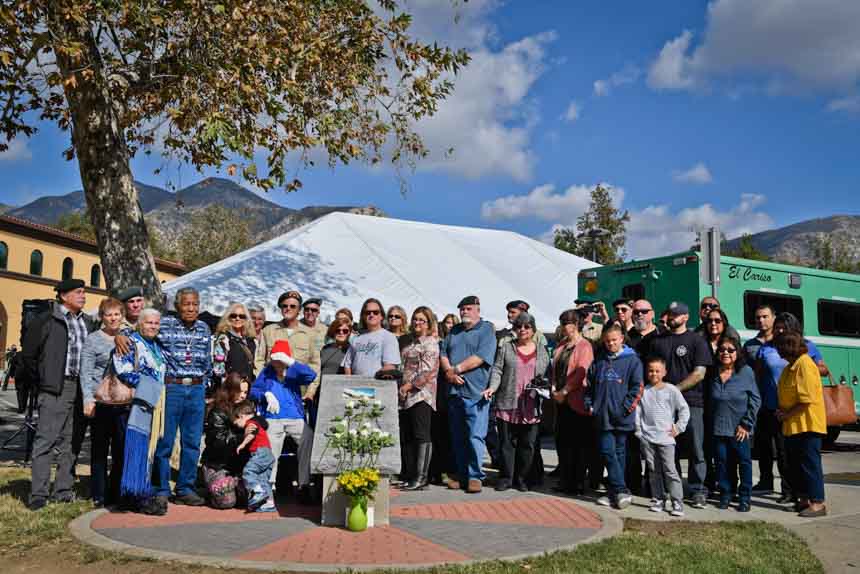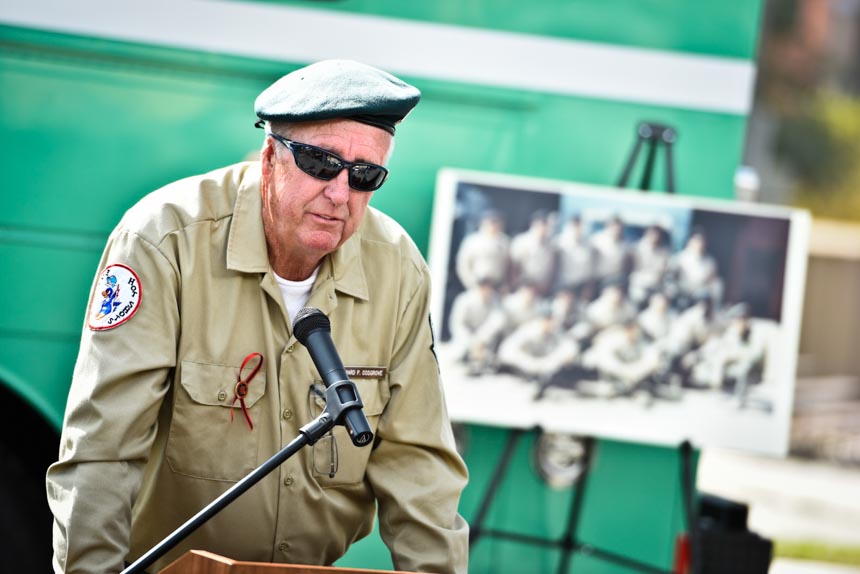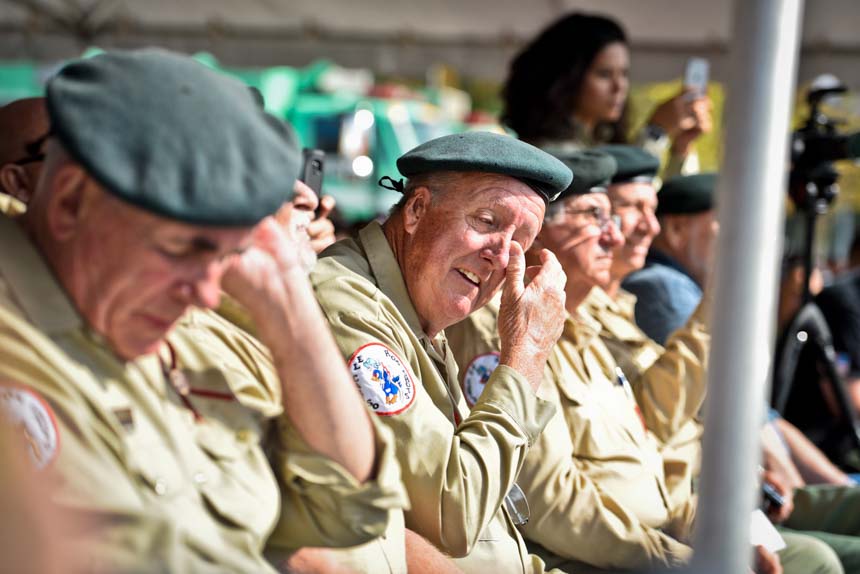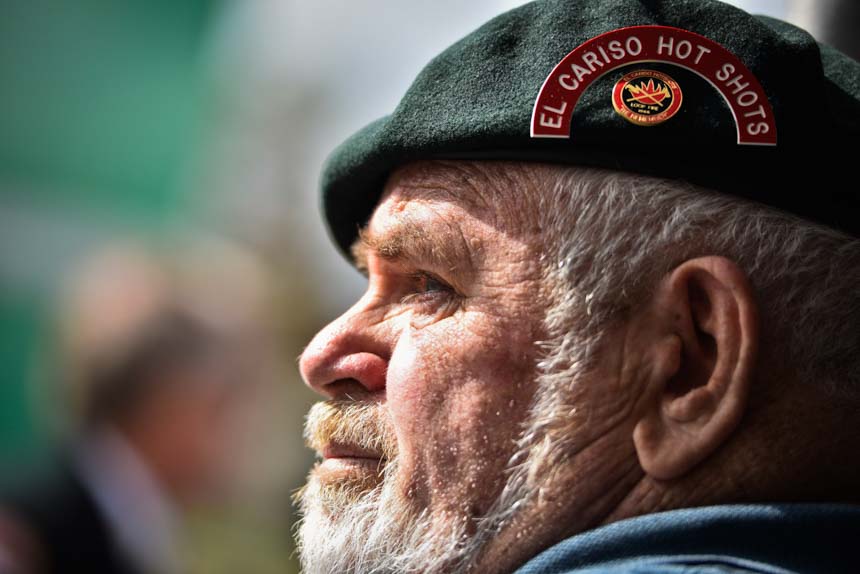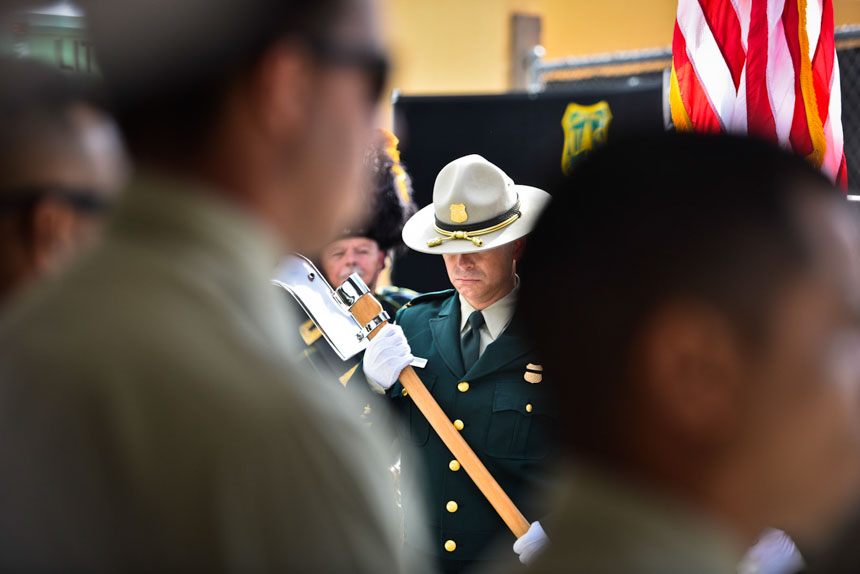We recently found out that a former U.S. Forest Service district Fire Management Officer and Superintendent of the El Cariso Hotshots passed away in April. Ron Campbell for the last 13 years had been dealing with a variety of medical issues, including cancer as well as heart and liver failures. He had been living in Redding, California and was 72 years old.
![Ron Campbell at El Cariso Hotshot Camp, 1972. Ron Campbell at El Cariso Hotshot Camp, 1972. Photo by Bill Gabbert.]()
Ron Campbell at El Cariso Hotshot Camp, 1972. Photo by Bill Gabbert.
I worked for Ron on El Cariso for three years. He was by far the best supervisor I ever had. He became more than that — a friend.
This news comes a couple of weeks after we found out that the El Cariso Hot Shots have been disbanded, at least until next year — two blows that feel like a punch to the gut for those who knew Ron or worked on the crew.
He started with the U.S. Forest Service in 1961 as a firefighter on the Cleveland National Forest in Southern California. In 1963 he was promoted to Driver at Alpine working for Chuck Mills and later worked at Descanso. He was a smokejumper at Redding in 1964 for one summer then he worked in fire prevention and was station foreman at Japatul and Mt. Laguna on the Cleveland NF. He was Superintendent of the El Cariso Hot Shots from 1969 until 1975 when he transferred to the Shasta-Trinity National Forest in northern California as Assistant Fire Management Officer on the Yolla Bolly Ranger District. Two years later he transferred to the Sequoia as district Fire Management Officer at Kernville. In 1979 he left the USFS to work with his brother as a private contractor on slash removal and fuel modification projects.
Before I was on El Cariso I worked for one summer on the Mendocino National Forest in northern California running a chain saw on a timber stand improvement (TSI) crew, thinning young Douglas Fir stands. I went to “fire school”, got a Red Card, and worked on three small fires that summer. I decided that fighting fire was more fun than thinning trees and in 1970 got a job on El Cariso with the help of a USFS college student summer work program through my school, Mississippi State University.
![Kenny Tortez and Ron Campbell Kenny Tortez and Ron Campbell]()
Kenny Tortez, Supt. of Del Rosa Hotshots (left) and Ron Campbell on the way to a fire with their two crews in 1971. Photo by Bill Gabbert.
Ron was skeptical of me at first, since I got the job through a non-traditional method. He pushed me harder, I thought, than most of the others on the crew, but maybe everyone thought the same thing about themselves. Eventually he came around to the fact that I had chain saw experience and made me a sawyer on the crew. One of my fellow firefighters thought I was stupid for disclosing that I knew how to run a chain saw, saying it was the hardest job. I was shocked the next year when I became one of the crew foremen.
Ron was able to see things in people, tap into their strengths, and help them develop their potential. We did a great deal of training on the crew, more than most wildland firefighters did in the 1970s. He knew how to inspire people and challenged us to become students of fire.
I asked Charlie Phenix what he remembered about Ron:
I was on the El Cariso crew 1969-1970 and Ron was the Superintendent. The crew was 30 men and most were new. I remember him as bigger than life, but I was just 19. From the beginning he was very stern but fair, I never ran so many PT miles in my life. He had a bent broken finger and when he pointed at us it was kind of funny. This was only 3 years after the Loop Fire so safety was a priority. He saw things in me I didn’t know I had, and in 1970 I became a crew leader (we split crew into 2-15 man teams). For a newby it gave me the foundation of Wildland firefighting I carried for my 38 year career. I still occasionally think of him and the positive impact he had on my life.
Hal Mortier also has memories of his time on the crew:
Ron Campbell was my first supervisor in the Forest Service and a memorable one at that. He was a no-nonsense leader with very high standards and expectations on the job…yet a lot of fun and a friend off the job. Ron was a shaker and a mover as evidenced by his rapid assent through the ranks. I am certain I modeled some of my leadership style and qualities after Ron, a true pleasure to work with and for!
And from Rick Bondar:
He was a tough, smart, ballsy, son of a bitch, who scared the hell out of me my first year and whom I respected and was almost friends with my last 2-3 years on the crew. We would have followed him anywhere & DID.
At that time there was no standard training curriculum in the USFS for new firefighters. There were some films we could watch, but training standards and lesson plans were left up to the individual units or districts, at least on the Cleveland NF. The wheel was reinvented constantly when training was offered.
![Rick Bondar (left) and Tom Sadowski Rick Bondar (left) and Tom Sadowski]()
Rick Bondar (left) and Tom Sadowski working on the Basic 32 training program in 1972. Photo by Bill Gabbert.
At his direction our crew developed a four-day basic training package for new firefighters which became known as the “Basic 32-hour Package”. It consisted of an instructor’s guide, a student workbook, and a slide-tape visual aid — slides synced to narrated audio on a tape. There were no personal computers then, and we made all of our graphics using hand-drawn images, artist supplies, press-on letters, and a 35mm camera. The illustrations of the “13 Situations that Shout Watchout” were drawn by a member of the crew during that time period. This was before 5 more situations were added, making it 18 Situations.
When the training package was finished in 1972 or 1973, it required a Wollensak cassette recorder to put it on which could recognize the slide advance tone, and a 35mm slide projector; the two were linked with a special cable. Eventually the program was converted to VHS tapes and was used with the workbooks in many locations around the country for training new firefighters.
![Ron Campbell and Al Kuehl Ron Campbell and Al Kuehl]()
Assistant Superintendent Al Kuel (left) and Ron Campbell at Lake Henshaw in 1970. Photo by Bill Gabbert.
Quite a number of firefighters from the Ron Campbell El Cariso era moved on and up into leadership roles in firefighting and other fields. I have lost track of many of them, but at the risk of leaving some out, the list includes Gary Cones, Hal Mortier, Bob Drown, Charlie Phenix, Rick Bondar, Tom Sadowski, Allen Bond, Chuck Whitlock, Steve Jakala, Mike Herth, and Roger Seewald. They all worked on the crew between 1970 and 1972. Perhaps our readers can add to this list, especially for the years 1973 through 1975 after I moved on to engines and the Laguna Hot Shots.
![El Cariso Hot Shots, 1970 El Cariso Hot Shots, 1970]()
El Cariso Hot Shots, 1970. Ron Campbell is in the front row, second from the left, with his arms folded. (click to see a larger version)
Tom Sadowski was on El Cariso from 1969 through 1972. From his home in Maine he sent us his memories of Ron.
****
“Ron Campbell
A Memorial
By Tom Sadowski
In 1969 I was 18 and Ron Campbell was, well he was older. You couldn’t tell how much older because he was always standing in the sun and you had to squint to make out the features on his face. It was my first time in sunny California and Ron Campbell seemed to be California to the core. He was blond and trim and he must have been experienced or the Forest Service wouldn’t have put him in charge. He never talked about his past but the guys had him pegged as ex Army Ranger or Marine; possibly Navy SEAL. Certainly he had smokejumper experience and very likely was on call for the CIA. His main concern was professionalism. He wanted to run the best crew with no flaws, no exception.
We immediately got off on the wrong foot. I was quite late for my first day of work because I had a letter, signed Ron Campbell, which specifically stated that long hair would not be acceptable. I took the time to shave my beard, find a barber shop and get most of my hair cut off before winding my way up the mountain.
As it was the dawning of the age of the hippy, the letter was very strongly worded. The warning about hair length overshadowed any mention about what time it was I was suppose to report for work. Anyway, I sort of felt like it was the same as reporting to summer camp: it didn’t really matter what time you got there on the first day. “Oh no,” said Ron Campbell and within 10 minutes of my arrival at El Cariso he had me out on the line swinging a hook at chamise and manzanita.
I came back to camp later that afternoon smelling like black sage and bleeding from the blisters on my hands and scratches on my face. Ron Campbell called me into his office which was a tiny cabin no bigger then four by eight feet with only enough room for his desk and a coffee pot, and Al Khuel’s desk who was the assistant superintendent, and for a few file cabinets and some office chairs. Ron Campbell stood me up against one of the bookcases and looked me up and down. “I thought we wrote you a letter stating that long hair would not be acceptable”.
What did this man want? This was the time of non-conformity and rebellion. Even though I drove 2500 miles to take this job in a National Forest that didn’t seem to have any trees, I’d be damned if this guy was going to tell me how I have to look in a job where I’m shaking hands with flammable shrubs all day long.
But Ron Campbell had other plans. He wasn’t about to let me quit. He already had me figured out. He would push me until I was about to quit and then he’d give me some slack until I came around, partially, to his way of thinking. Through Dan Bender, my first foreman, he got me and everyone else singing the same song. He was a crew builder and he built the best crews with no flaws, no exception.
It may seem odd but we used to play tetherball behind the mess hall where we had set up an obstacle course for physical training. Tetherball is fondly remembered by most people as a third grade schoolyard game where two players stand opposite each other with a steel pole in between them. Connected to this pole on a hefty cord is the tetherball. The object is to wrap the cord around the pole by hitting the ball with your hands which would be easy except that your opponent tries to wrap the cord around the pole in the opposite direction. The third grade version of the game is generally harmless but players in the school yard don’t usually have a combined weight exceeding 350 pounds and something to prove.
![Ron Campbell and Bill Gabbert Ron Campbell and Bill Gabbert]()
Ron Campbell (left) and Bill Gabbert, tether ball, 1972. Photo by Tom Sadowski.
That summer a lot of the guys were nursing long scabs on their forearms not so much from tangling with the chaparral but as a result of rope burns from the tetherball. Hot Shot Tetherball games got so intense we had to impose the one rule that we also used when playing commando volleyball: No Knives.
Ron Campbell, as the cool headed superintendent who had an air about him indicating he was always in charge, had no time for these games. Occasionally he would leave his office and just check in on us to make sure we weren’t killing each other or doing something so dangerous that he might have to console our parents. Ron was not big on consoling anyone as there should never be a need if everyone follows the rules. He never said it directly but it was very clear to us that if he ever did have to console our parents because something stupid we did caused our demise, he would make it a point to come to the hospital or wake us from the dead if need be and personally throttle us.
So on a particularly hot afternoon after defeating any challengers at the tetherball pole, I looked up to see Ron Campbell watching. We may have goaded him a bit because he never played but he came over to the pole and with the sun to his back he looked at me and said something like “Let’s see what you’ve got”.
Game on. We volleyed a bit to test each other and then got serious. Ron Campbell got in a few good hits and then I countered. I remember the ball came to me and I just happened to be in perfect position to hit it right in the sweet spot with all my might. The yellow sphere rocketed toward Ron Campbell who was no more than six feet away and hit him squarely in the face with a terrible crushing sound. It may have broken his nose but to my astonishment, Ron Campbell didn’t flinch. The ball ricocheted past my head as I stood there dumbfounded. That was it. As soon as it got back to him, he deftly accelerated it by me and above my reach until seconds later, he won the game.
I stayed with the crew for four seasons largely because of Ron Campbell. He was one of those influential figures who I think of often. Our beliefs may not have been on the same plane but we were united in purpose when it came to getting the job done. I moved on to fill a position as the assistant fire management officer at the Glennallen District in Alaska for the Department of Interior. I dealt with many fire crews and a lot of trying situations but thanks to Ron Campbell, to this day, I never flinch whenever I get hit in the face. OK, I will never be a stony as he was but I give it a go. Thank you, Ron Campbell.”
![Share]()
